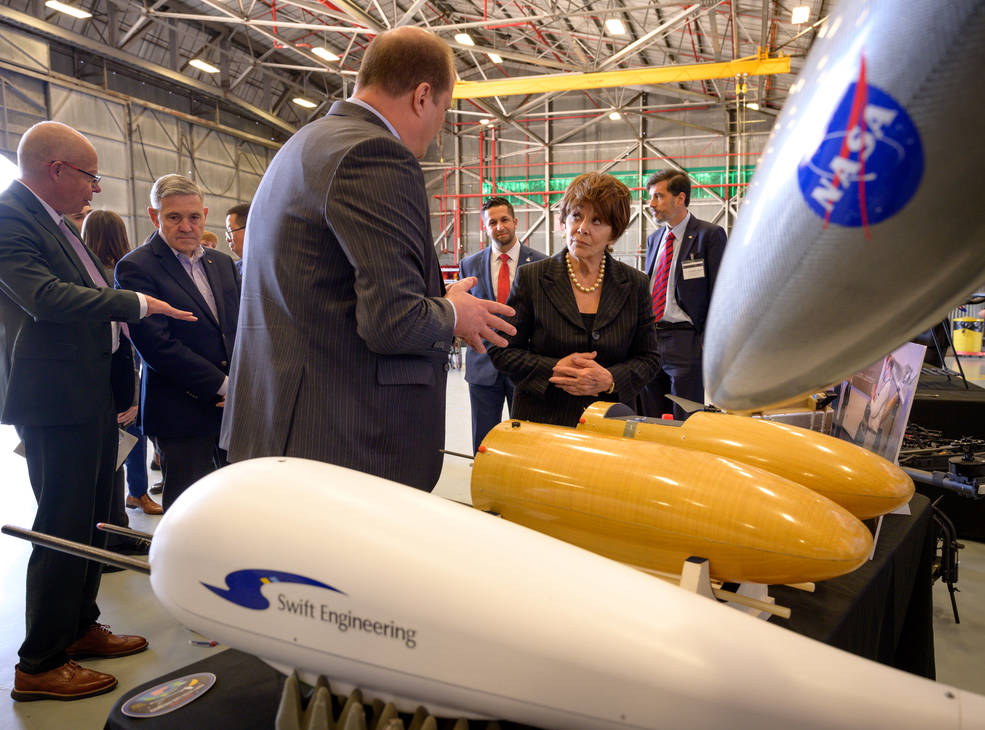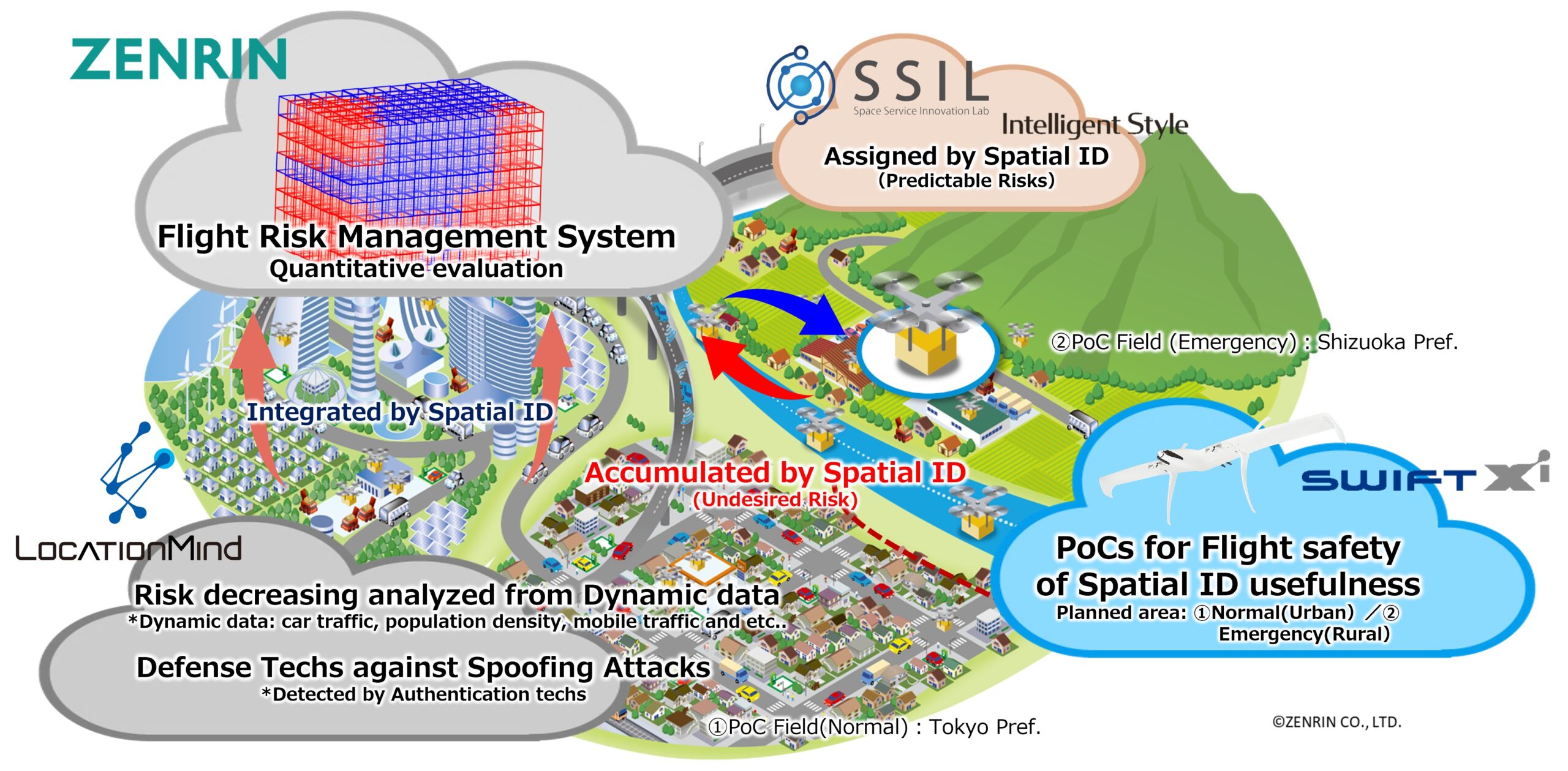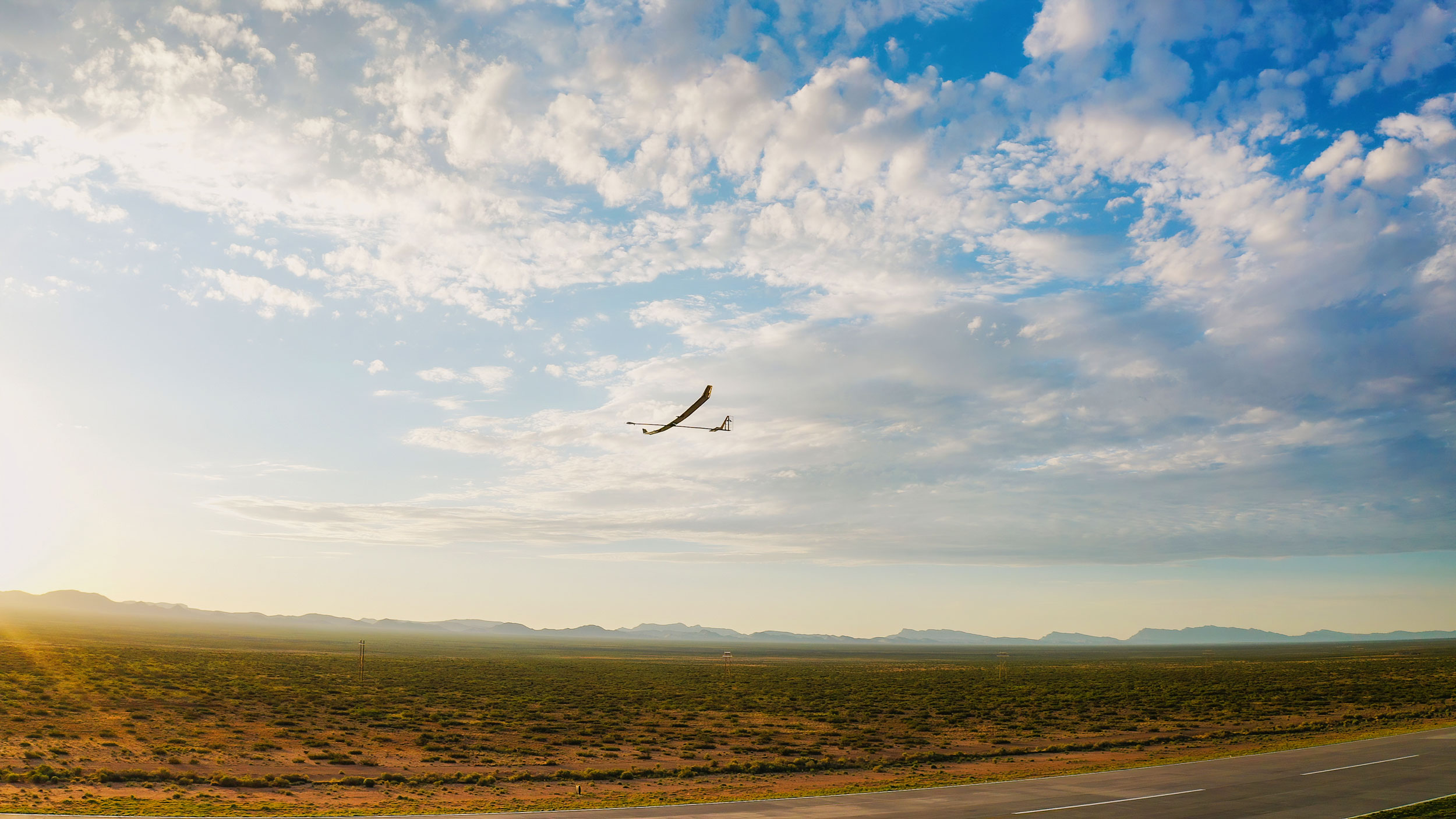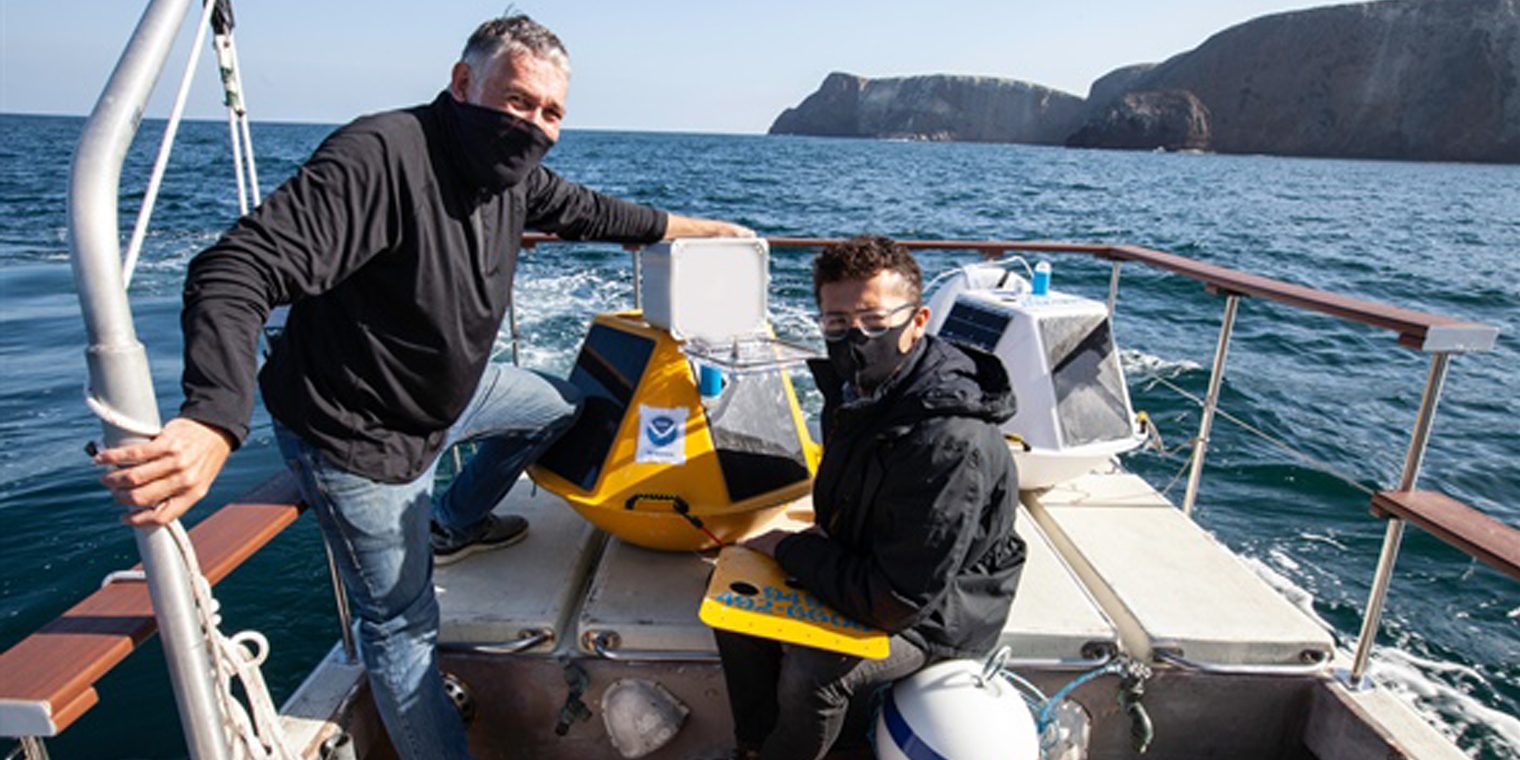Florian Schwandner (left), director of the Earth Sciences Division at NASA’s Ames Research Center, describes to U.S. Rep. Anna Eshoo the use of autonomous uncrewed aircraft to carry cameras and sensors for monitoring of environmental events such as wildfires or volcanic activity.
NASA is working to understand climate change and build resilience to its risks, such as the increasing threat of wildfire, for the nation and the world. On April 13, the agency’s top leadership visited NASA’s Ames Research Center in California’s Silicon Valley to learn about the center’s climate science and innovations in aeronautics that will help people everywhere face these challenges.
While innovating to improve life on Earth, NASA continues to look beyond, and the day began with a town hall meeting for employees, focused on the agency’s Moon to Mars initiative. NASA Administrator Bill Nelson, Deputy Administrator Pam Melroy, and Associate Administrator Bob Cabana joined other agency leaders to discuss the agency’s Moon to Mars objectives, a blueprint for shaping NASA’s exploration throughout the solar system.
Closer to home, Ames is bringing together experts from across NASA, other government agencies, academia, and commercial industry to address major wildfires in new ways. A group of them, along with U.S. Reps. Anna G. Eshoo and Zoe Lofgren, gathered today for a roundtable discussion of each partner’s unique contributions to wildfire resilience. Topics included the role philanthropic organizations and the venture capitalist community can play and ways to reduce the impact of fires on communities that have been disproportionately affected in the past, such as rural communities and people of color.
The group then joined members of the media for a tour showcasing climate science expertise and innovative solutions to better fight large wildfires by increasing the role of aircraft.
Deputy Administrator Melroy gave remarks pointing to NASA’s mission to innovate for the benefit of humanity and the importance of the agency’s partnerships.
“You cannot imagine how passionate the people are at NASA – and especially at Ames Research Center – about solving [the wildfire] problem,” said Melroy. “But we know we can’t do this alone. We’ve been really honored to lead an interagency coordination committee to bring together the technologies and the users to better understand how we can work together.”
The visitors heard about NASA’s Advanced Capabilities for Emergency Response Operations (ACERO) project. Led by Ames, ACERO is leveraging NASA’s expertise to develop an air traffic management system that integrates remotely operated aircraft into firefighting operations. ACERO will allow aerial wildfire suppression using these aircraft when pilots can’t safely fly around wildfires, due to low light or other low-visibility conditions. This is known as the “second shift,” and will allow crews to fight and monitor wildfires 24/7.
NASA’s Wildland FireSense project, which staff at Ames lead for the agency, was also highlighted. FireSense offers the resources of NASA and its decades of Earth science data to inform decision-makers and guide actions in fire management – before, during, and after a fire.
Unprecedented insights into Earth’s systems, backed by huge amounts of data, are also being produced by the NASA Earth Exchange (NEX), a Big Data initiative using NASA’s supercomputers at Ames. Leaders in Earth science at the center shared NEX work to substantially increase the resolution of global climate projections, enabling local decisionmakers worldwide to adapt to and better mitigate climate change effects, including wildfires.
Strong collaborations and expertise from many areas will be needed to tackle these challenges. NASA, including experts at Ames, will continue working closely with its partners to reach that goal.
Original Article: nasa.gov




